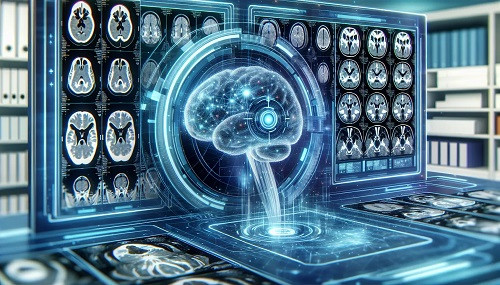AI-Powered Lung Ultrasound Outperforms Human Experts in Tuberculosis Diagnosis

IIE Digital Desk : Researchers have developed an artificial intelligence (AI) system capable of diagnosing tuberculosis (TB) using lung ultrasound images with greater accuracy than human experts. This cutting-edge advancement could be a game-changer in the fight against TB, especially in low-resource regions where access to skilled radiologists remains limited.
The AI model, developed through a collaboration between Charles Darwin University, United International University, and Australian Catholic University, has been trained to analyze ultrasound videos of the lungs frame by frame. The system, which leverages deep learning techniques, is capable of identifying subtle patterns and lung abnormalities that are often difficult for the human eye to detect, even among trained radiologists.
The AI-powered ultrasound system achieved an impressive diagnostic accuracy rate of 96.57%—a figure that surpasses most traditional clinical evaluations performed by experts. What makes this advancement even more promising is the use of explainable AI. This feature allows doctors and healthcare professionals to see the reasoning behind the AI’s diagnosis, enhancing trust and transparency in clinical settings.
Traditionally, TB has been diagnosed through chest X-rays, sputum tests, or molecular diagnostics. However, these methods can be costly, time-consuming, and difficult to implement in remote areas. Lung ultrasound, on the other hand, is portable, non-invasive, and radiation-free, making it ideal for use in field settings or resource-limited clinics. With the integration of AI, the diagnostic power of ultrasound becomes even more potent, reducing reliance on specialized personnel.
TB remains one of the world’s deadliest infectious diseases, claiming over a million lives annually. The World Health Organization has emphasized the need for faster and more accessible diagnostics as a core strategy in its global End TB initiative. In this context, AI-assisted tools like the one developed in this study could play a pivotal role in early detection and intervention.
This breakthrough also reflects a broader trend in medical technology, where AI is increasingly being used to augment, rather than replace, human expertise. From analyzing chest X-rays to interpreting MRI scans, AI has shown the ability to enhance clinical workflows, reduce diagnostic errors, and improve patient outcomes.
The researchers have highlighted that the system is not designed to replace doctors but to support them—especially in underserved areas. For example, frontline healthcare workers with minimal training could use a handheld ultrasound device linked to the AI system to screen for TB quickly and reliably. This democratization of diagnostics could dramatically expand the reach of public health programs.
As the system undergoes further validation and potential deployment, it raises hopes for a future where AI not only supplements healthcare delivery but actively addresses disparities in access. If scaled effectively, this innovation could revolutionize TB screening across the globe, especially in countries where the disease continues to take a heavy toll.
You might also like!















